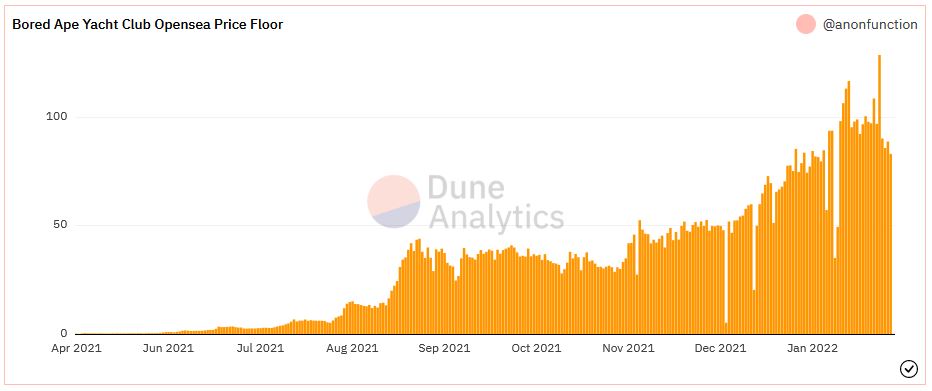
NFTs aren't just about art.
@john_c_palmer raised more than $28,000 for writing an essay about hyperpop.
@khole_emily crowdfunded $50,000 within 24 hours for her novel.
@jessewldn's patronage+ model is changing the static web2 content monetization model, one step at a time 🧵
@john_c_palmer raised more than $28,000 for writing an essay about hyperpop.
@khole_emily crowdfunded $50,000 within 24 hours for her novel.
@jessewldn's patronage+ model is changing the static web2 content monetization model, one step at a time 🧵
1/ The original attention economy is evolving into an ownership economy.
Content creators were powerless with web2. Ownership lied within the hands of hyperscalers and giants.
But with the advent of blockchain and NFTs, the scales of power are tilting in favour of creators.
Content creators were powerless with web2. Ownership lied within the hands of hyperscalers and giants.
But with the advent of blockchain and NFTs, the scales of power are tilting in favour of creators.
2/ Content creators are finding new ways of monetizing their work without the constraints of the web2 patronage model.
Mirror.xyz is one example of this. As an innovative approach to decentralized publishing, content creators can mint their digital asset and earn.
Mirror.xyz is one example of this. As an innovative approach to decentralized publishing, content creators can mint their digital asset and earn.
3/ But why does that matter when platforms like patreon.com and substack.com exist?
Can't you just disregard the lousy payments from web2 content platforms for these patronage platforms?
Can't you just disregard the lousy payments from web2 content platforms for these patronage platforms?
4/ Yes, of course. But there's several problems with the web2 patronage model.
Before I get into what these problems are, let's first begin by explaining the difference between the old, web2 patronage model, and the new and improved web3 patronage+ model.
Before I get into what these problems are, let's first begin by explaining the difference between the old, web2 patronage model, and the new and improved web3 patronage+ model.
5/ Patronage model
The OG model works like this:
1) Content creator (CC) puts out content on a web2 platform like YouTube
2) CC pitches patreon.com profile for those who want to financially support their favourite CC
3) Supporter pays CC through a subscription model
The OG model works like this:
1) Content creator (CC) puts out content on a web2 platform like YouTube
2) CC pitches patreon.com profile for those who want to financially support their favourite CC
3) Supporter pays CC through a subscription model
6/ Patronage+ model
Now for the new and improved model, it works like this:
1) CC creates an NFT associated with their digital content
2) Supporter purchases NFT
3) Supporter can sell NFT if they think the content will become more valuable in the future
Now for the new and improved model, it works like this:
1) CC creates an NFT associated with their digital content
2) Supporter purchases NFT
3) Supporter can sell NFT if they think the content will become more valuable in the future
7/ Now that we further understand the differences between the models, we can dive a bit deeper into the disadvantages of patronage and advantages of patronage+.
8/ The problem with the web2 patronage model is two-fold:
- As a supporter, you can only “rent” access to the digital asset
- The market doesn’t decide the monetary value of the digital asset--the content creator does.
- As a supporter, you can only “rent” access to the digital asset
- The market doesn’t decide the monetary value of the digital asset--the content creator does.
9/ Patronage+ is changing the creator economy.
It isn't about creators selling anymore, it's about buyers monetizing the CC's attention.
It isn't about creators selling anymore, it's about buyers monetizing the CC's attention.
10/ Supporters can claim IP assets and truly own a piece of digital content from their favourite CC.
Supporters can profit of the digital asset, thus bringing further value to the fan.
Supporters can make collaborative decisions about the CC's output through DAOs.
Supporters can profit of the digital asset, thus bringing further value to the fan.
Supporters can make collaborative decisions about the CC's output through DAOs.
11/ Here are a couple of examples of applications for the patronage+ model:
- NFT pass for a newsletter
- NFT for a long-form article
- NFT for your song
- NFT for your course
All of these examples can be monetized through minting and royalty payments.
- NFT pass for a newsletter
- NFT for a long-form article
- NFT for your song
- NFT for your course
All of these examples can be monetized through minting and royalty payments.
12/ There's new opportunities for content creators, you just have to look.
If you enjoyed this short thread, follow me @wholelottajuju
Also, checkout my Medium profile for longer form articles 👇
wholelottajuju.medium.com
If you enjoyed this short thread, follow me @wholelottajuju
Also, checkout my Medium profile for longer form articles 👇
wholelottajuju.medium.com
13/ Resources
every.mirror.xyz/y_WLA-Tk3VF5uP…
decrypt.co/68981/emily-se…
vocal.media/theChain/the-f…
podclips.com/ct/uwONqy
every.mirror.xyz/y_WLA-Tk3VF5uP…
decrypt.co/68981/emily-se…
vocal.media/theChain/the-f…
podclips.com/ct/uwONqy
• • •
Missing some Tweet in this thread? You can try to
force a refresh










